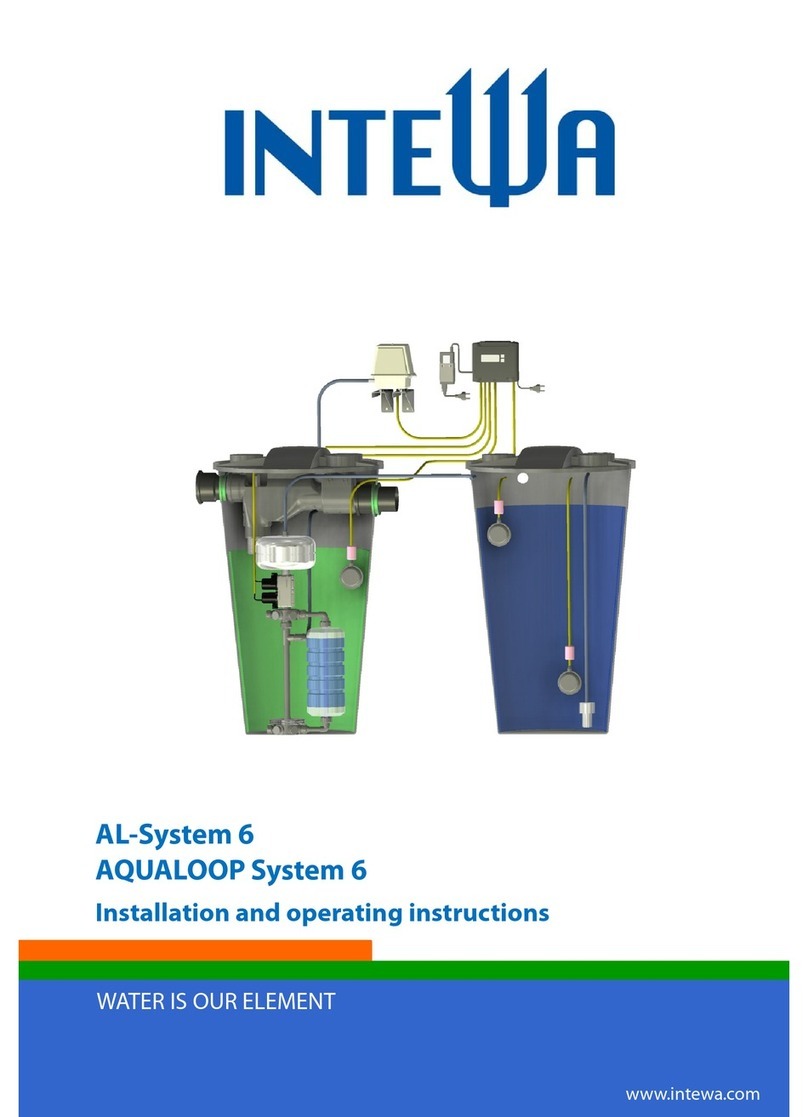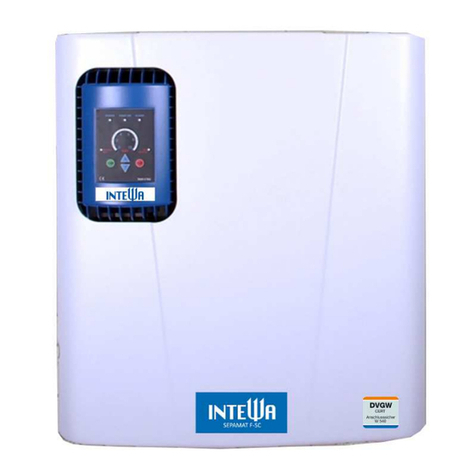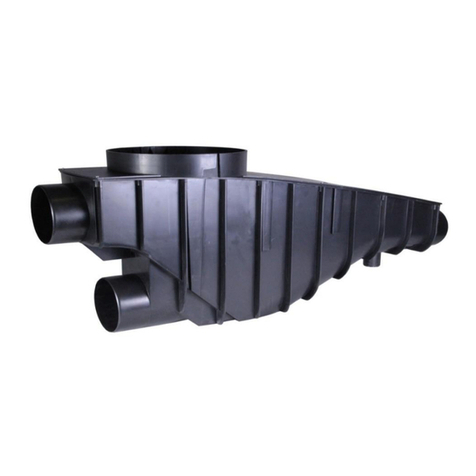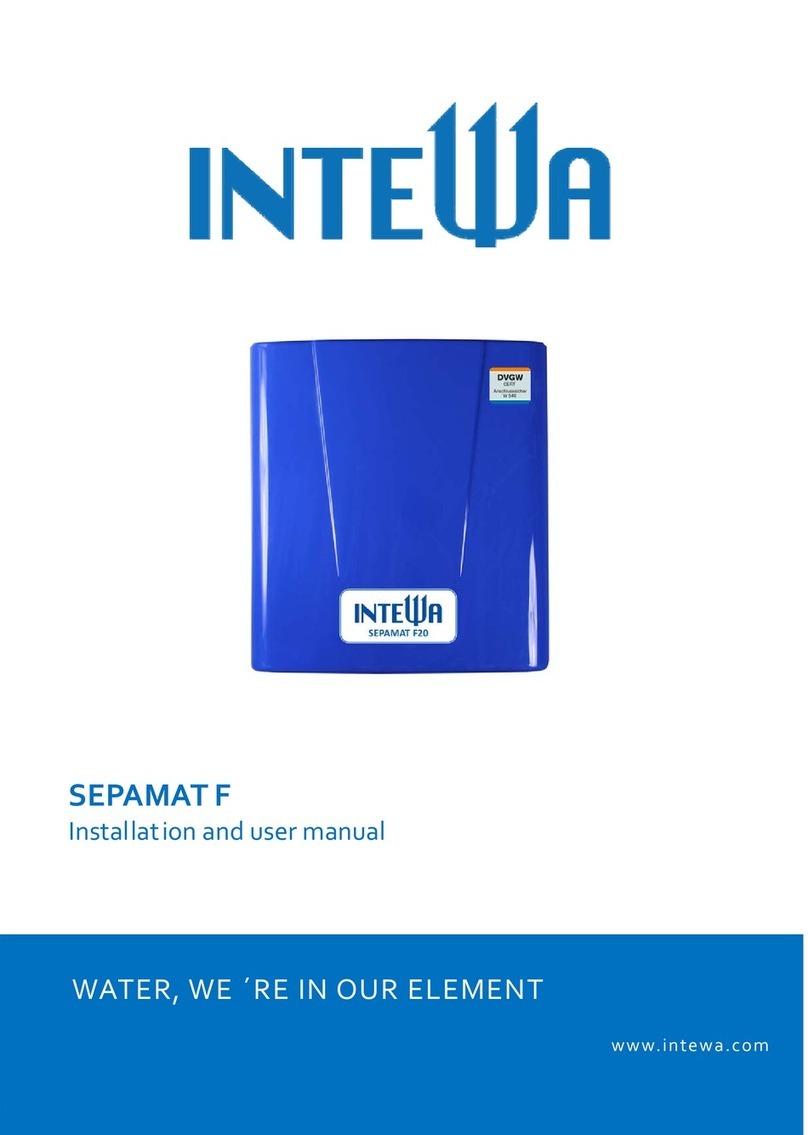
SEPAMAT F_Manual_Vers.1.4f_en
2
1. Introduction and scope of application
Congratulations on purchasing your SEPAMAT E (Short name, SMT E).
The SMT E is designed as a separation unit, for use with small volume flows.
The DVGW certified, fully automatic and ready-to-connect separation unit fulfills the separation of
drinking water from category 5 liquids according to DIN EN 1717.
The integrated pump supplies water on-demand from the separation chamber to the users. The
water level in the separation chamber is controlled by a floating valve. The drinking water supply
and emergency overflow are connected to the separation chamber.
The user connection point can be a maximum of 10 m above the SMT E.
2. Safety instructions
The live components have to be installed only by a qualified electrician. In
case of failure of the electronic device, the product has to be repaired by a
qualified electrician before being operated again. There is a risk of electric
shock!
The outlet circuit used for the device has to be secured through a circuit
breaker protected (16 A in several countries). If unavailable, an FI switch with
maximum operating current of 30 mA has to be connected.
These installation and operating guidelines have to be read carefully before
installing the product. The instructions mentioned have to be followed strictly.
Modifications to the product are not permitted, otherwise the warranty
becomes void.
The following points have to be strictly observed during the installation and operation:
•Check the product before installation for any visible defects. If defects are present, then the
product must not be installed. Damaged products can be dangerous.
•Installations at the fresh water pipeline system have to be only performed by a qualified
installation firm.
•A floor drain has to be provided near the installation site, which can collect inadvertent water
discharge (such as with pump defect, pipe breakage etc.) and prevent water damage inside
the building. The brickwork behind the water-carrying system must be protected from water
(such as with water-resistant paint).
•The wall material behind the water-handling system should be protected against water
damage (ie. water-tight coating).
•Make sure that the existing emergency overflows are connected and adequately sized.
•Remove the mains plug if you will be away for more than 24 hours.
•Lock the fresh water line at the inlet of the device if you will be away for more than 24 hours.

































